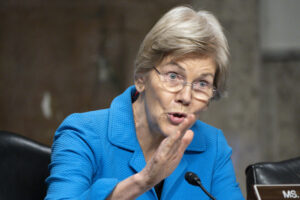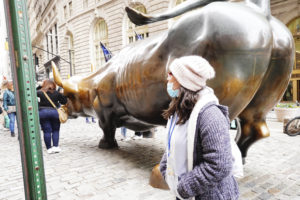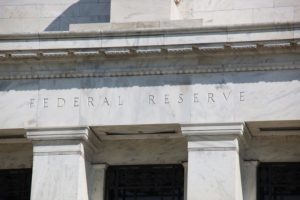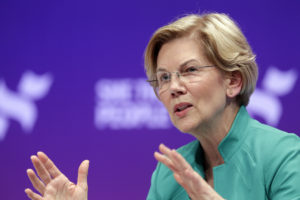Reinventing Banking: From Russia to Iceland to Ecuador
These transformations, current and proposed, are constructive steps toward streamlining the banking system, eliminating the risks that have devastated individuals and governments, democratizing money, and promoting sustainable and prosperous economies. Everyman Films Inc / CC BY 2.0
1
2
Everyman Films Inc / CC BY 2.0
1
2
Public Banking Initiatives in Iceland, Ireland and the UK
A major concern with stripping private banks of the power to create money as deposits when they make loans is that it will seriously reduce the availability of credit in an already sluggish economy. One solution is to make the banks, or some of them, public institutions. They would still be creating money when they made loans, but it would be as agents of the government; and the profits would be available for public use, on the model of the US Bank of North Dakota and the German Sparkassen (public savings banks).
In Ireland, three political parties – Sinn Fein, the Green Party and Renua Ireland (a new party) — are now supporting initiatives for a network of local publicly-owned banks on the Sparkassen model. In the UK, the New Economy Foundation (NEF) is proposing that the failed Royal Bank of Scotland be transformed into a network of public interest banks on that model. And in Iceland, public banking is part of the platform of a new political party called the Dawn Party.
Ecuador’s Dinero Electronico: A National Digital Currency
So far, these banking overhauls are just proposals; but in Ecuador, radical transformation of the banking system is under way.
Ever since 2000, when Ecuador agreed to use the US dollar as its official legal tender, it has had to ship boatloads of paper dollars into the country just to conduct trade. In order to “seek efficiency in payment systems [and] to promote and contribute to the economic stability of the country,” the government of President Rafael Correa has therefore established the world’s first national digitally-issued currency.
Unlike Bitcoin and similar private crypto-currencies (which have been outlawed in the country), Ecuador’s dinero electronico is operated and backed by the government. The Ecuadorian digital currency is less like Bitcoin than like M-Pesa, a private mobile phone-based money transfer service started by Vodafone, which has generated a “mobile money” revolution in Kenya.
Western central banks issue digital currency for the use of commercial banks in their reserve accounts, but it is not available to the public. In Ecuador, any qualifying person can have an account at the central bank; and opening one is as easy as walking into a participating financial institution and exchanging paper money for electronic money stored on their smartphones.
Ecuador’s banks and other financial institutions were ordered in May 2015 to adopt the digital payment system within the next year, making them “macro-agents” of the Electric Currency System.
According to a National Assembly statement:
Electronic money will stimulate the economy; it will be possible to attract more Ecuadorian citizens, especially those who do not have checking or savings accounts and credit cards alone. The electronic currency will be backed by the assets of the Central Bank of Ecuador.
That means there is no fear of the bank going bankrupt or of bank runs or bail-ins. Nor can the digital currency be devalued by speculative short selling. The government has declared that these are digital US dollars trading at 1 to 1 – take it or leave it – and the people are taking it. According to an October 2015 article titled “Ecuador’s Digital Currency Is Winning Hearts!”, the currency is actually taking the country by storm; and other countries in Latin America and Africa are not far behind.
The president of the Ecuadorian Association of Private Banks observes that the digital currency could be used to finance the public debt. However, the government has insisted that this will not be done. According to an economist at Ecuador’s central bank:
We did it from the government because we wanted it to be a democratic product. In any other countries, [digital currency] is provided by private companies, and it is expensive. There are barriers to entry, like [expensive fees] if you transfer money from one cellphone operator to another. What we have here is something everyone can use regardless of the operator they are using.
Banking Moves into the 21st Century
The catastrophic failures of the Western banking system mandate a new vision. These transformations, current and proposed, are constructive steps toward streamlining the banking system, eliminating the risks that have devastated individuals and governments, democratizing money, and promoting sustainable and prosperous economies.
They also raise some provocative questions:
- Would issuing “quantitative easing” to the tune of 20 trillion rubles for Russian development and trade trigger hyperinflation?
- Could merging the Iceland version of the Chicago Plan with a public banking initiative return the power to create money to the public without collapsing credit?
- How does the Ecuadorian national digital currency mesh with the “war on cash” underway in Europe?
These and related questions will be explored in later articles. Stay tuned.
Ellen Brown is an attorney, founder of the Public Banking Institute, and author of twelve books including the best-selling Web of Debt. Her latest book, The Public Bank Solution, explores successful public banking models historically and globally. Her 300+ blog articles are at EllenBrown.com. Listen to “It’s Our Money with Ellen Brown” on PRN.FM. Your support matters…Independent journalism is under threat and overshadowed by heavily funded mainstream media.
You can help level the playing field. Become a member.
Your tax-deductible contribution keeps us digging beneath the headlines to give you thought-provoking, investigative reporting and analysis that unearths what's really happening- without compromise.
Give today to support our courageous, independent journalists.






You need to be a supporter to comment.
There are currently no responses to this article.
Be the first to respond.